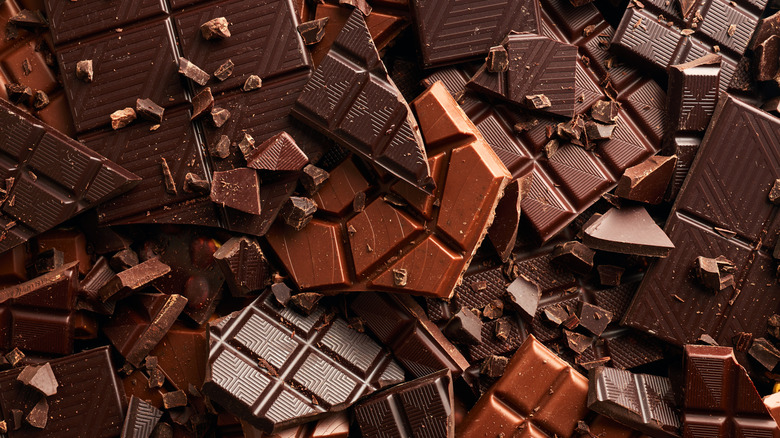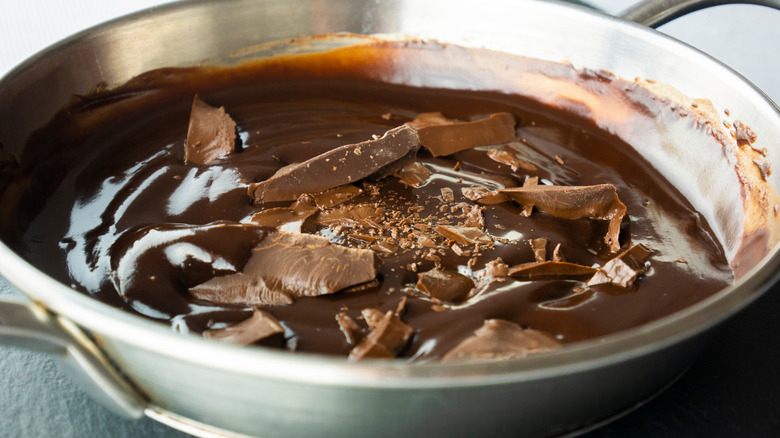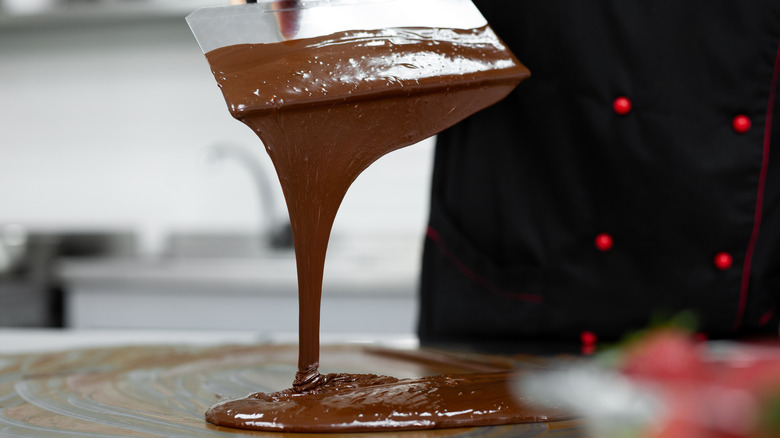What Exactly Does It Mean To Temper Chocolate?
Whether you are delving into the art of crafting chocolate confections or simply one who delights in desserts, you have likely heard of tempered chocolate. Just as with glass, tempering chocolate is all about heating and cooling the material with extreme care to yield beautiful results. Failing to temper chocolate properly is a common mistake that ruins chocolate-covered strawberries and other sweet treats. Luckily, Nicole Patel, Founder of Delysia Chocolatier and 2025's Best Chocolatier in the Americas with the highest honor of the Six Star Award: Grand Master Chocolatier, has shared valuable insights about the art of tempering chocolate.
"The process of tempering chocolate involves controlling the melting, cooling, and reheating of chocolate within specified temperature ranges specific to each kind of chocolate," Patel explains. It all comes down to science. "Tempering the chocolate stabilizes the cocoa butter crystals, allowing the chocolate to cool back into a smooth, shiny, and snappy quality."
How to temper your own chocolate
When tempering chocolate at home, Patel suggests using couverture chocolate. "If you're going to do it right, couverture is the way to go," Patel says. "Just make sure you're tempering based on the specific type: white, milk, or dark. Each one has its own sweet spot temperature-wise." Using a double boiler or microwave, melt ⅔ of your chocolate.
The other third should be broken or chopped into seeds, ½ to 1-inch uniform chunks that will help slowly lower the mixture's temperature. And, no, there aren't really any shortcuts here. "A cheese grater is not recommended for seed chocolate because it can create unevenly sized pieces that may not melt uniformly, leading to inconsistent tempering," cautions Patel. "Instead, it's better to chop seed chocolate into small, uniform pieces using a knife for optimal results."
If you are working with milk or white chocolate, Patel says to heat that first portion to 110 degrees Fahrenheit. Otherwise, heat it to approximately 115 degrees. Then, remove from the heat and gradually add in the seeds, stirring vigorously until the chocolate is 84 degrees. Reheat the chocolate to 89 degrees, stirring in more seeds if the temperature gets too high. This is a delicate balancing act, and Patel emphasizes that, "In some cases, you may need to restart the tempering process from the beginning." Once the chocolate reaches 89 degrees, it's time to test the temper.
Check the temper with an easy test
After running through this process, check the chocolate's finish and snap with a small piece of parchment paper. "To test the temper, dip a small piece of parchment into your chocolate," says Patel. "Let it sit at room temperature for a few minutes. The chocolate should be smooth and firm. If it's streaky or runny, try stirring in more chocolate to the mixture to bring the temperature down further."
Some common mistakes include reaching for the wrong sort of chocolate (coating chocolate, with its palm oil and cocoa powder, is okay but just won't temper to the same taste or snap as couverture does, says Patel). You'll also want to consider your environment. "Chocolate is not a fan of chaos," Patel notes. "Work in a space that's cool (ideally between 65-70°F), low in humidity, and on a surface that holds a steady temperature like marble or granite." While she admits that it's a finicky ingredient and process, anyone who's achieved perfectly tempered chocolate will surely agree it's worth the effort.


